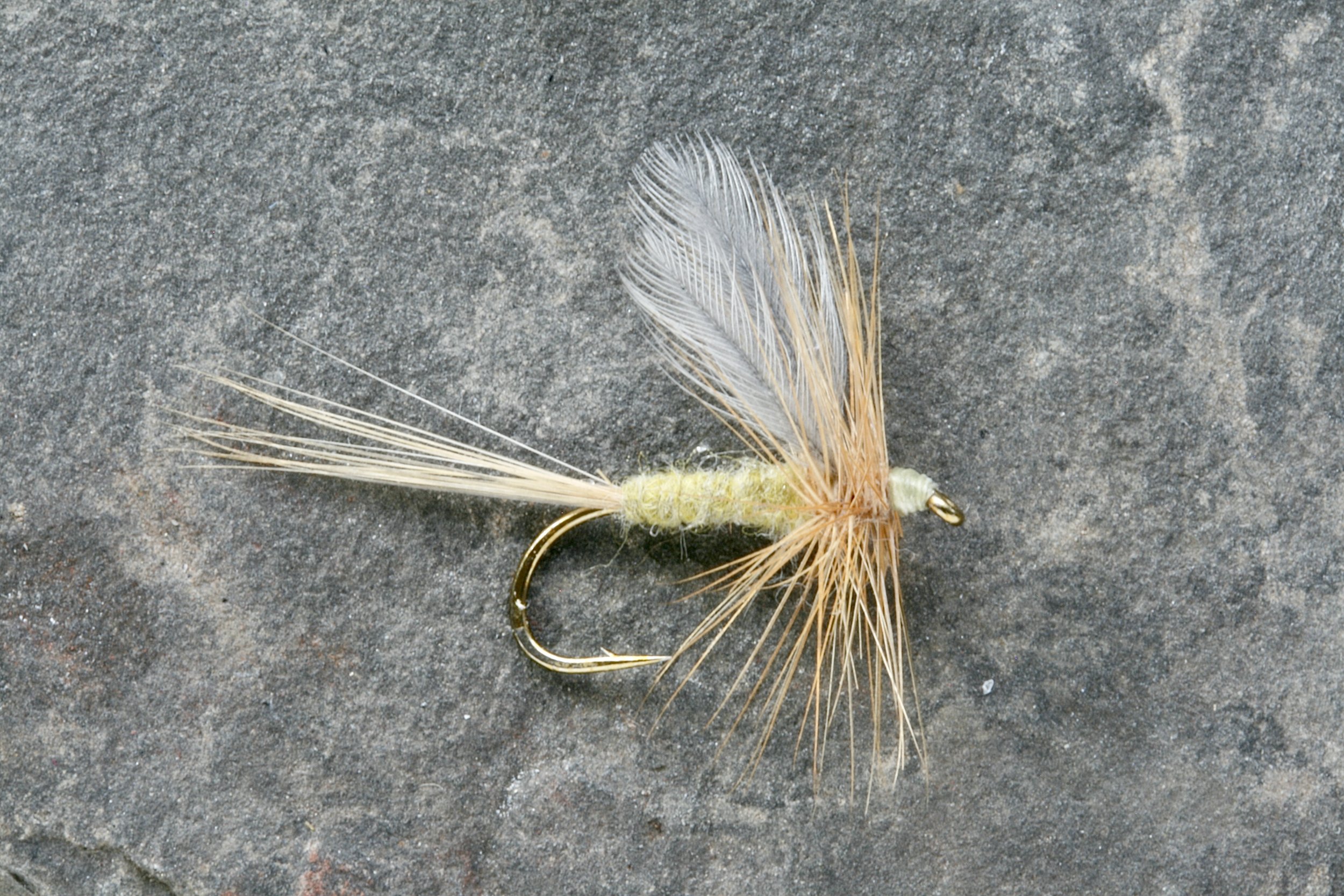Artwork courtesy Lynda McLennan, Trout Tracks Art – mclennanflyfishing.com
Mayflies
Pale Morning Dun (PMD)
A prolific hatch across western Canada and the western U.S., it starts in the late morning and extends through most of the afternoon. It often produces a lot of cripples and the duns seem to struggle for a long time to hatch at the surface, giving trout ample opportunity to feast. If conventional dry flies aren’t ringing the dinner bell and fish are rising, try a nymph just under the surface or an emerger at the surface. The Frying Pan River in Colorado is well known for producing a pinkish colored dun, and these can sometimes be found on other rivers as well – having a variety of patterns at hand increases your odds. A rusty spinner later in the afternoon is often productive.
Western March Brown
A spring hatch found in most of the same rivers and creeks as the PMD, often overlapping with blue wing olives. Even more so than most mayflies, cloudy and cool days are your best bet. Due to their coloration and smaller numbers they can sometimes be difficult to see on the water – getting your eyes close to the surface and looking upstream with the reflected light from the sky helps identify them. When water temperatures reach 50 F/ 10 C and the weather is blustery and cool, dress warmly and head for your favourite stream.
Blue Wing Olive
A smaller mayfly that hatches in good numbers in the spring and again in the fall, although you can see a few here and there even in June, July and early August. If you’re fishing an early PMD hatch and nothing seems to work, switch to a BWO pattern and give it a try. Even though there may be few or none visible on the surface in between the PMD duns, you will be surprised how often they work.
Callibaetis
A stillwater mayfly common to higher elevation lakes, similar in color to march browns, although smaller and lighter in color. Although hatches can be sparse and sporadic, they are around most of the summer, and much like most mayfly species, cool and dark days are the best. If fish are rising and dun patterns aren’t producing, switching to a spinner pattern often helps.
Western Green Drake
A large mayfly made famous on the Henry’s Fork in Idaho, they are found in varying degrees in western rivers just after spring runoff subsides. The hatch is usually only 1-2 weeks in duration (afternoons), so timing is important if travelling afar. Our patterns are tied on a longer shank/lighter wire hook to enhance floatability and reduce the amount of hackle needed – allowing the trout to grab the fly and making setting the hook easier. A lot of imitations tied with lots of stiff hackle are too bushy for the trout to grab easily, resulting in missed strikes. If you are still having difficulty hooking up, consider trimming the hackle back underneath the thorax – if treated well with floatant the fly will settle into the surface film and still float well and increase your success.
Brown Drake
These large mayflies are found in slow moving, soft bottom streams – the North Raven River (Stauffer Creek) in west central Alberta is well known for this species. They usually hatch just after the Green Drakes are finished, but only for a short time, usually just a few days. They are a late evening hatch, and after the sun sets is usually the best time – this can make for challenging fishing as visibility diminishes rapidly.
Hexagenia
Although more frequently found around the Great Lakes drainages, they can be found in a small number of streams that also have Brown Drakes – The North and South Raven Rivers and Dogpound Creek in Alberta are known to have this species. The largest mayfly found in North America, it hatches at sunset and into the night – if you manage to hit the hatch (late July into early August in Alberta), you will find you will be fishing by sound rather than sight in the dark, as trout attack aggressively.
Trico
Another prolific hatch, these tiny mayflies show up in late summer and early fall, and clouds of mating spinners can be see along the banks of many rivers and streams once air temperatures reach 68 F/ 20 C. Most patterns are tied to represent the spent spinners, but a parachute dun pattern with an olive green abdomen fished at the start of the spinner clouds often works well. Visibility of your fly can be a problem when the surface is covered with spinners, but using a slightly larger fly tied to represent 2 spinners together, or using a pattern with a high visibility upright wing post can help. Another trick that some find works well is using a size 18 red flying ant pattern during the spinner fall – no scientific explanation for this!













